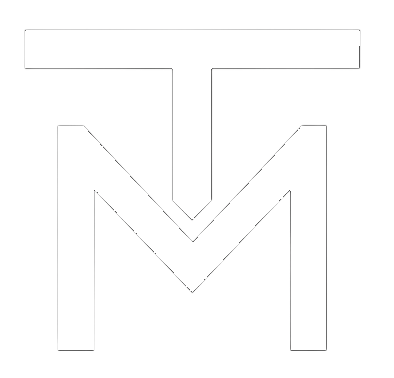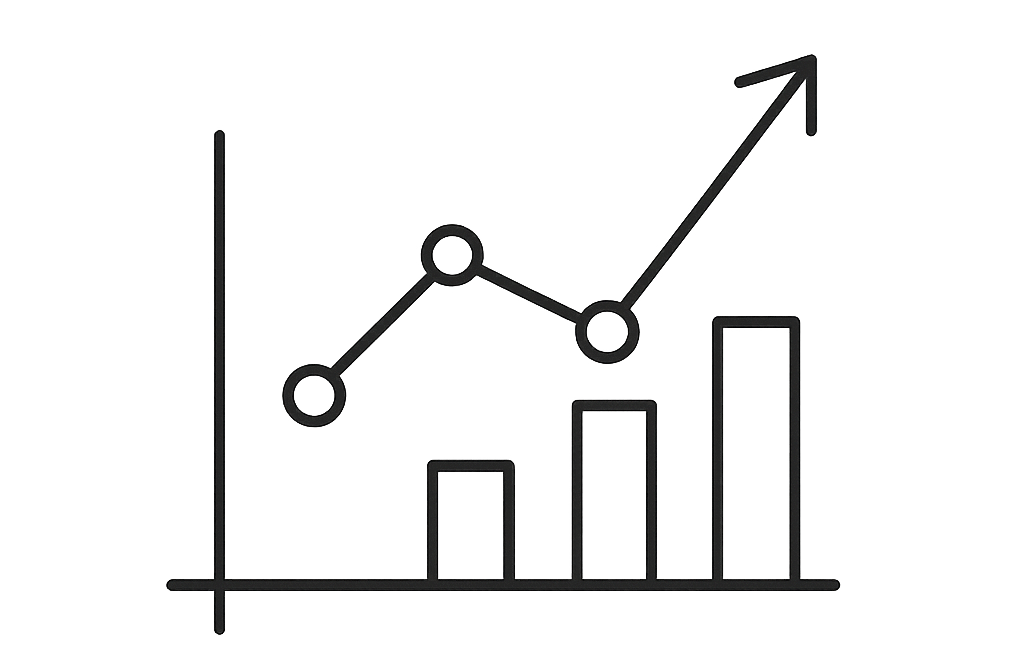Overview
Project Summary
This app allows users to input their travel preferences—such as architectural interests, activities like skiing, trip length, and budget—and receive curated destination suggestions that match their desires.
Role & Tools
- Role: UX Designer, Researcher
- Tools: Figma, HTML/CSS
- Duration: 3 weeks
Problem
- Travelers often struggle to find destinations that match multiple interests (e.g., modern architecture and skiing) within a limited budget and timeframe.
- People often get overwhelmed by the sheer number of options available—social media, TV programs, magazines. But when it comes to choosing a destination that matches their preferences, it becomes a headache. Which destination should I pick? What can I do there? Can I include this activity in that country?
- Traditional travel agencies charge high fees and often offer fixed packages with little customization. Many users, especially younger or budget-conscious travelers, find them unaffordable.
- Travel apps often bombard users with too many options, making decision-making stressful and time-consuming.
- Flights, accommodations, activities, and local recommendations are often handled by separate apps or services.
70%
of travelers already use or are open to AI tools.
81%
of parents are likely to use AI for travel planning.
75%
want personalized travel recommendations.
85%
value customization of budget and trip duration.
Solution
- Personalization Engine - Uses AI and user profiles (interests, lifestyle, trip goals) to tailor destinations, activities, and itineraries.
- Budget-based Dynamic Planning - Allows users to input budget and get flexible, modular trip plans.
- Intuitive, Filtered Interfaces - Clean, minimalist UI with emotional and lifestyle-based filters (e.g., “Relaxing with nature,” “Architectural journey”).
- Travel Hub - Integrates flights, stays, local tips, and documents in one platform.
- Transparent Reviews - The app cross-references global destination data and user ratings to provide a custom trip proposal.
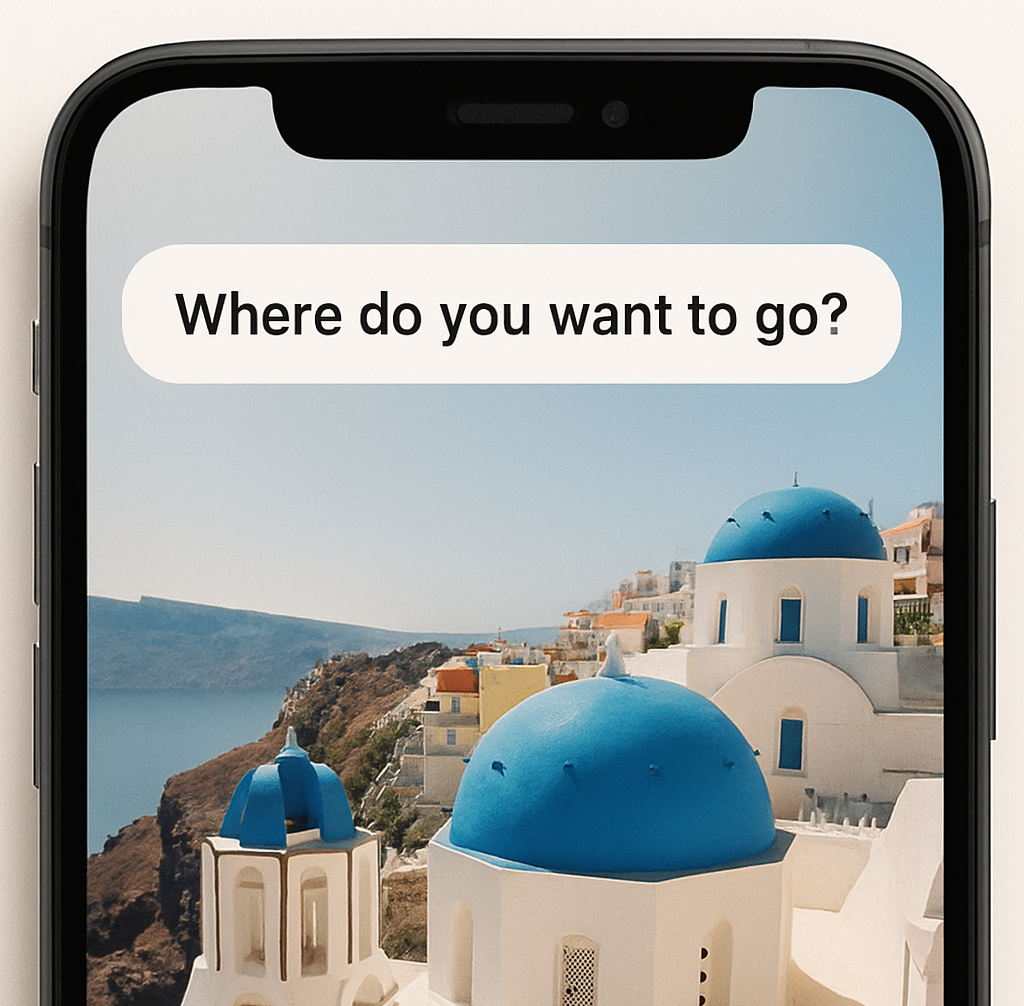
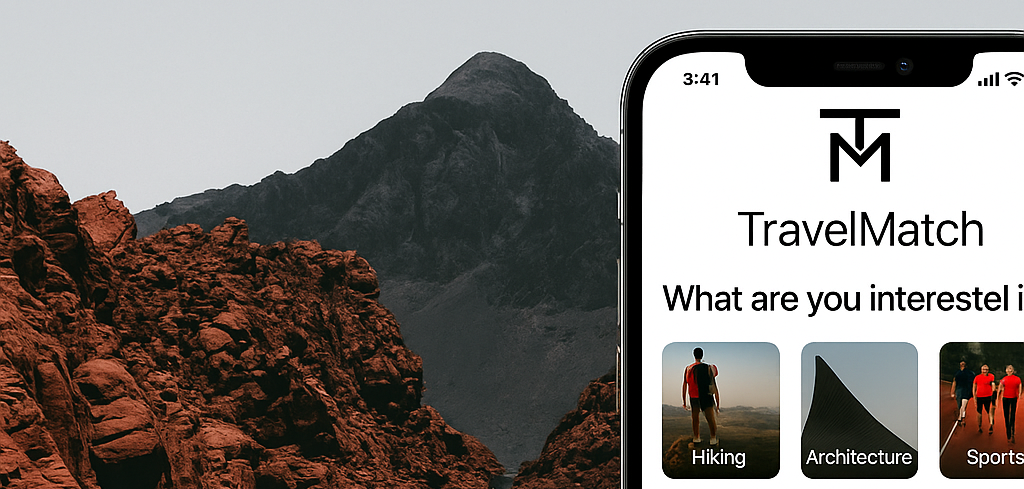

- Amalfi Coast 🌊
- Tokyo 🗼
- Madagascar 🌴
- Marrakech 🐫
75%
of users want personalized travel recommendations.



Development Process
I conducted a research to understand the market, competitors, and user behaviors related to travel planning apps, which informed the design decisions.
1. MARKET ANALYSIS
I conducted an analysis of the travel and leisure app market, identifying key competitors along with their strengths and weaknesses.
2. COMPETITOR ANALYSIS
I reviewed the major travel apps as of 2025, focusing on features, strengths, weaknesses, and differentiation opportunities for TravelMatch.
3. USER BEHAVIOR TRENDS
I researched how travelers plan trips, the tools they use, and common pain points. These insights guided the essential features for TravelMate.
4. TECHNOLOGY TRENDS
Key Technology trends shaping how users book trips in 2025, especially through apps and digital platform.
5. CONTENT STRATEGY
I assessed localized information, real-time updates, and user-generated content, leading to features that ensure users always have personalized and relevant information.
6. USABILITY STANDARDS
I reviewed mobile app usability best practices, focusing on the travel sector. This ensured TravelMatch’s design is intuitive, accessible, and user-friendly.
USER PERSONAS

PAULA STONE
🎯 Goals
- Find personalized travel recommendations without hours of research.
- Explore food, art, and wellness-focused destinations.
- Take 2–3 trips per year within a $1,500–$2,000 budget.
💡 Pain Points
- Overwhelmed by generic search results.
- Lack of personalized or curated experiences.
- Time-consuming trip planning process.
🌎 Behaviors
- Uses Instagram and Pinterest for inspiration.
- Books trips using mobile apps.
- Follows travel influencers and solo travel blogs.

TOMMY CONCRETE
🎯 Goals
- Discover unique destinations that align with his cultural interests.
- Plan trips that mix adventure and relaxation.
- Get recommendations tailored to mood, vibe, and design inspiration.
💡 Pain Points
- Overwhelmed by too many travel websites with generic suggestions.
- Frustrated when apps don’t filter suggestions by preferences.
- Lacks time to compare prices, activities, and cultural relevance.
🌎 Behaviors
- Frequently travels solo or with friends.
- Relies on Instagram, Pinterest, and Reddit for inspiration.
- Makes spontaneous weekend plans, and a big trip a year.
AGE: 34
LOCATION: Miami, Florida
OCCUPATION: Marketing Manager
EDUCATION: BS Communications
TECH COMFORT LEVEL: High
RELATIONSHIP STATUS: Single
🛠️ Skills & Comfort Levels
AGE: 25
LOCATION: Rome, Italy
OCCUPATION: Jr UX Designer
EDUCATION: BS Graphic Design
TECH COMFORT LEVEL: High — uses multiple travel and AI apps
RELATIONSHIP STATUS: Single
🛠️ Skills & Comfort Levels
User Flow Case Study
1. Designing Seamless Travel for TravelMatch
Enhancing the digital travel experience through intuitive step-by-step planning, AI-powered personalization, and smart booking logic.
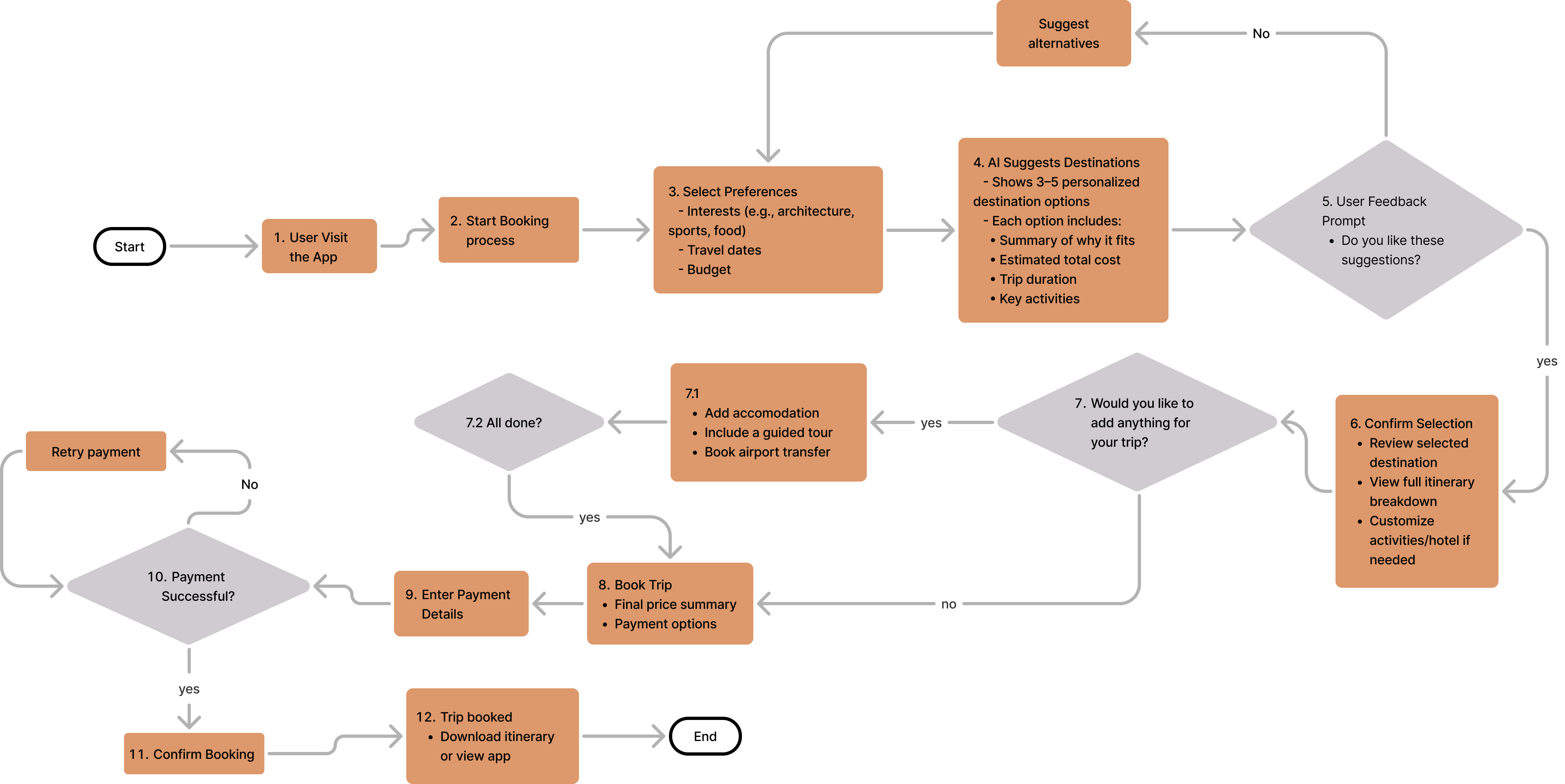
Key Features
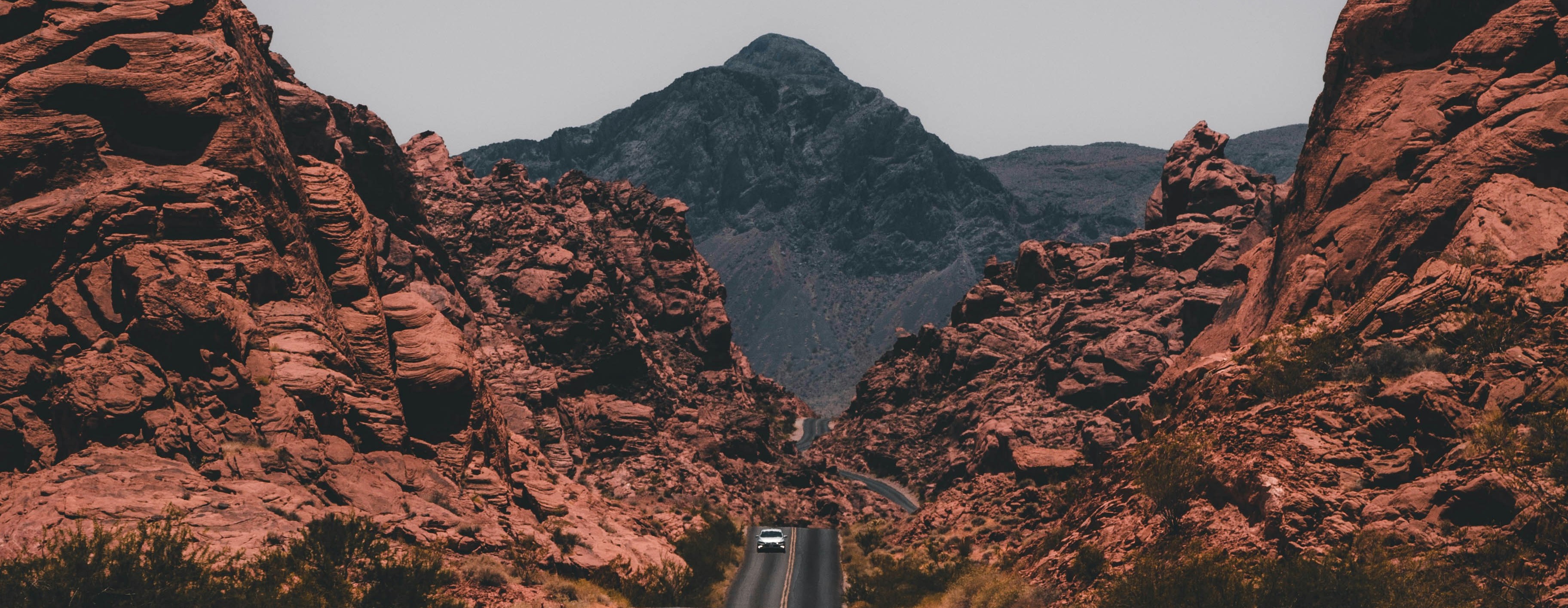
Preference-based destination matching

Budget-aware trip planning

Multi-interest filtering (e.g., sport + culture)

BOOK A TRIP ANYTIME, EASILY ANYWHERE
Budget-aware trip planning

Interactive previews and booking links
Wireframes
Before diving into the visual design, I created wireframes to define the layout, functionality, and user flow of the app. These helped align the team on structure and user expectations.
LOW FIDELITY WIREFRAMES
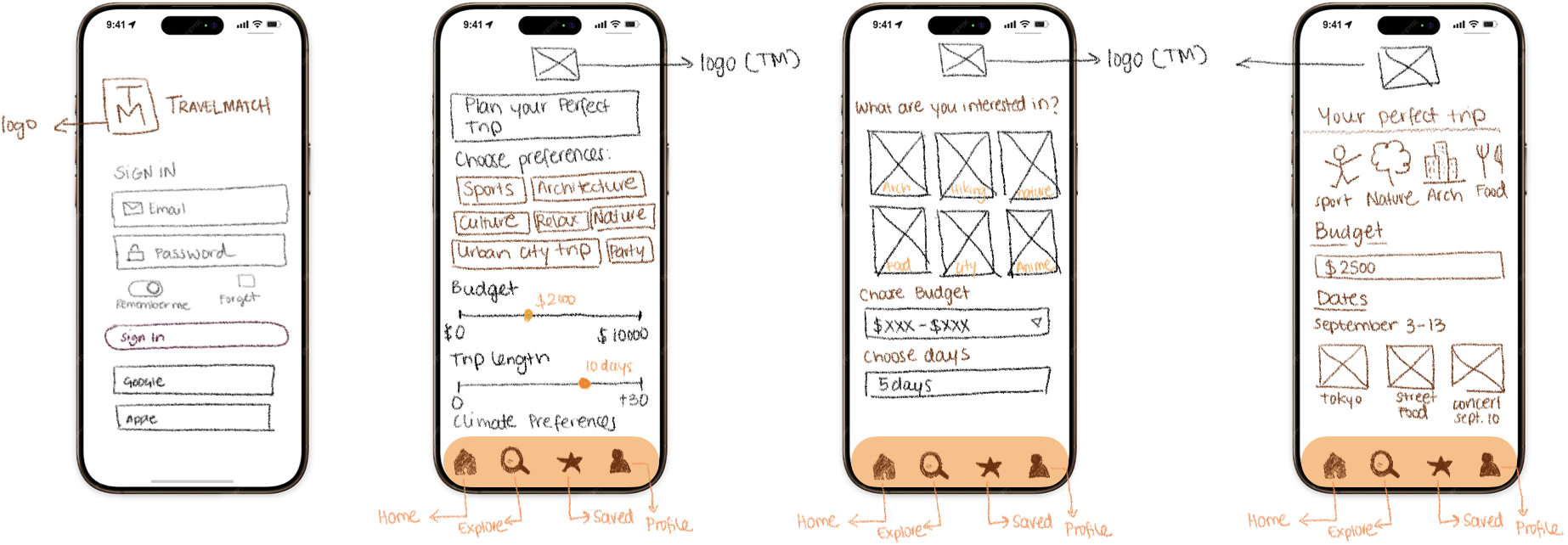
2. Trip Preferences: Users select interests (e.g., Sports, Nature), define their budget and trip duration.
3. Interest & Filters: Users refine preferences by choosing categories, setting budgets, and selecting travel dates.
4. Trip Summary: Displays a generated trip plan with icons, budget info, and suggested destinations or activities.
HIGH FIDELITY WIREFRAMES
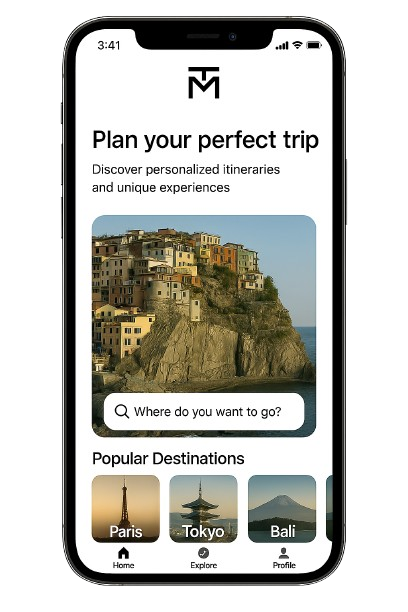
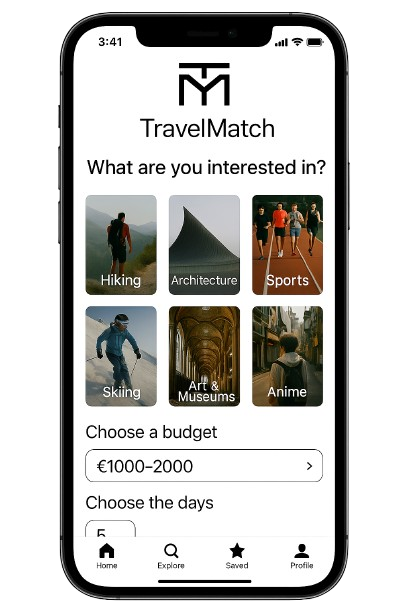
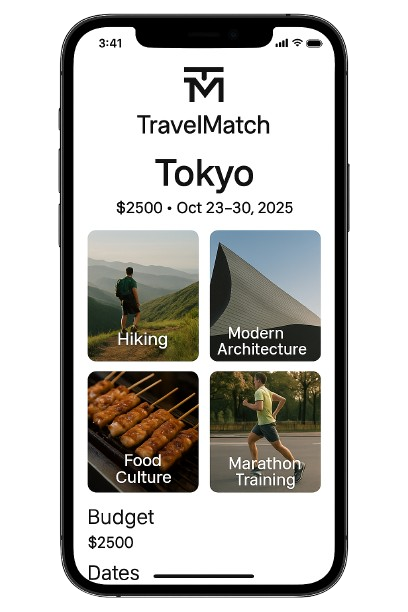
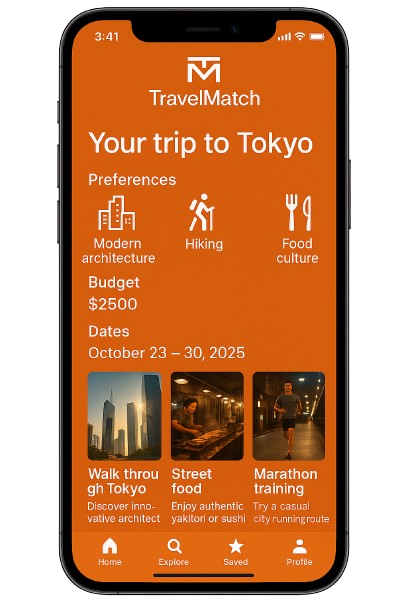
Impact
Discover Your Next Adventure
TravelMatch helps you find destinations that match your mood, style, and budget.
- Preference-based destination matching
- Multi-interest filtering (e.g., sport + culture)
- Budget-aware trip planning
- Interactive previews and booking links
